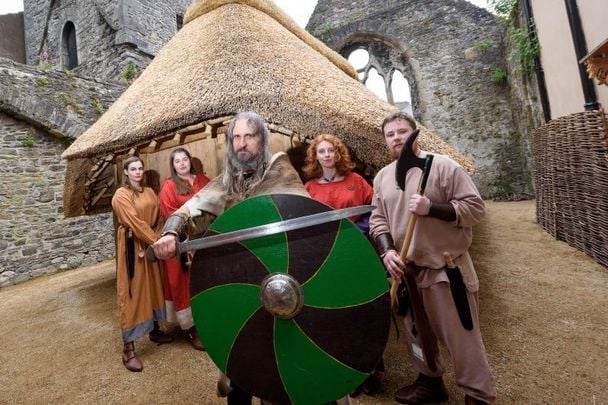While it’s been shown that Viking blood had a larger impact on Irish DNA than previously thought, what other contributions did the Vikings have in Ireland?
The fact is that the Vikings had quite an impact on Ireland and contributed to the country more than you may think.
Vikings in Ireland - facts and timeframe
Vikings first invaded Ireland in 795 AD and the rest is history. The Vikings from the Scandinavian countries began raiding Ireland just before 800 AD and continued for two centuries before Brian Boru defeated them at the Battle of Clontarf in 1014.
The first recorded Viking raid in Ireland occurred in 795 AD when the church on Lambeg Island in Dublin was plundered and burned. At the time, there were no true towns in Ireland but rather scattered communities near monasteries that served as ‘safe houses’ for valuables, food, and cattle. This made those locations prime targets for Viking raids.
As the Vikings continued their raids on Ireland during the ninth century they established settlements around the country, many of which still survive today. One of the earliest Viking settlements established at the mouth of the Liffey survived to become what is now modern Dublin.
In 914 AD, a fleet of ships established a base at Waterford, followed by a base at Cork. Somewhat later, an invasion along the Shannon estuary laid the foundation for Limerick. Wexford was another stronghold, with the region between Wexford, Waterford, and Kilkenny known as Ireland’s Viking Triangle.
Why did the Vikings come to Ireland?
The act of traveling overseas to other lands and plundering them of their wealth and riches was really what the Viking society was about. The Vikings were great experts at building boats which were used for long journeys and they made use of this to travel, raid, and gather as much as they could from other people.
How did the Vikings change Ireland?
Researchers at Trinity College Dublin believe that Viking and Norman invasions of Ireland may have made a more striking impression on the DNA breakup of the country than previously thought. They also discovered 23 new genetic clusters in Ireland not previously identified, leading to the belief that we may have far more Viking and Norman ancestry than previously evidenced.
By comparing 1,000 Irish genomes with over 6,000 genomes from Britain and mainland Europe, genetic clusters within the west of Ireland, in particular, were discovered for the first time, leading the researchers to investigate if invasions from the Vikings and Normans to the east may have influenced genetics in that part of the country.
Some of the most common Irish surnames also derive from Viking origins. Doyle (son of the dark foreigner), MacAuliffe (Son of Olaf), and MacManus (Son of Manus) all originate from the Scandinavian warriors who settled in Ireland and married the native Irish.
Viking contributions in Ireland
The Vikings are credited with creating the first trade routes between Ireland, Scandinavia, and England. Using Dublin as their main base in Ireland, they traded with the rest of Europe to a level the native Irish never had before them. This brought in many influences from Europe which remain in Ireland to this day.
As the Vikings continued their raids on Ireland during the ninth century they established settlements around the country, many of which still survive today. Waterford, Cork, Dublin, Wexford, and Limerick were all turned into trading centers by the Vikings and later developed into the towns and cities we know today
As well as this, arguably the most famous cathedral in Ireland and still to this day a big draw for tourists in Dublin, is the magnificent Christ Church Cathedral. Silkbeard, the Norse King of Dublin was responsible for it being built around the year 1030.
*Originally published in April 2018. Updated in September 2023.




Comments